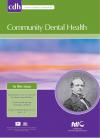Community Dental Health

- Cover Date:
- December 2007
- Print ISSN:
- 0265 539X
- Vol:
- 24
- Issue:
- 4
Dental caries trends among indigenous and non-indigenous Australian children
Objective To examine trends in dental caries among indigenous and non-indigenous children in an Australian territory. Basic Research Design Routinely-collected data from a random selection of 6- and 12-year-old indigenous and non-indigenous children enrolled in the Northern Territory School Dental Service from 1989–2000 were obtained. The association of indigenous status with caries prevalence (percent dmft or DMFT>0 and percent dmft>3 or DMFT>1), caries severity (mean dmft or DMFT) and treatment need (percent d/dmft or D/DMFT) was examined. Results Results were obtained for 10,687 6- and 12-year old indigenous children and 21,777 6- and 12year-old non-indigenous children from 1989–2000. Across all years, indigenous 6-year-olds had higher caries prevalence in the deciduous dentition, greater mean dmft and percent d/dmft, and indigenous 12-year-olds had greater percent D/DMFT than their non-indigenous counterparts (p<0.05). From 1996–2000 the mean dmft and percent d/dmft for indigenous 6-year-olds and mean DMFT and percent D/DMFT for indigenous 12-year-olds increased, yet remained relatively constant for their non-indigenous counterparts (p<0.05). From 1997–2000, the percent dmft>3 for 6-year-old indigenous children was more than double that of non-indigenous children, while across the period 1994–2000, indigenous 6-year-old mean dmft was more than double that of their non-indigenous counterparts (p<0.05). Conclusions Indigenous children in our study experienced consistently poorer oral health than non-indigenous children. The severity of dental caries among indigenous children, particularly in the deciduous dentition, appears to be increasing while that of non-indigenous children has remained constant. Our findings suggest that indigenous children carry a disproportionate amount of the dental caries burden among Northern Territory 6- and 12-year-olds.
Key words: Children, dental caries, indigenous, trends
- Article Price
- £15.00
- Institution Article Price
- £
- Page Start
- 238
- Page End
- 246
- Authors
- L.M. Jamieson, J.M. Armfield, K.F. Roberts-Thomson
Articles from this issue
- Title
- Pg. Start
- Pg. End
- Evaluation of the Parental Perceptions Questionnaire, a component of the COHQoL, for use in the UK.
- 198
- 204
- Private dental health expenditure in Greece by region and income: comparison between the years 1987 and 1998.
- 216
- 216
- Dental caries prevalence among adults in Denmark – the impact of socio-demographic factors and use of oral health services
- 225
- 232
- The effect of advance telephone prompting in a survey of general dental practitioners in Scotland: A randomised controlled trial
- 233
- 237
- Short Communication - Caries prevalence and location and dental treatment needs in preschoolers in Athens – GENESIS Project
- 264
- 267
